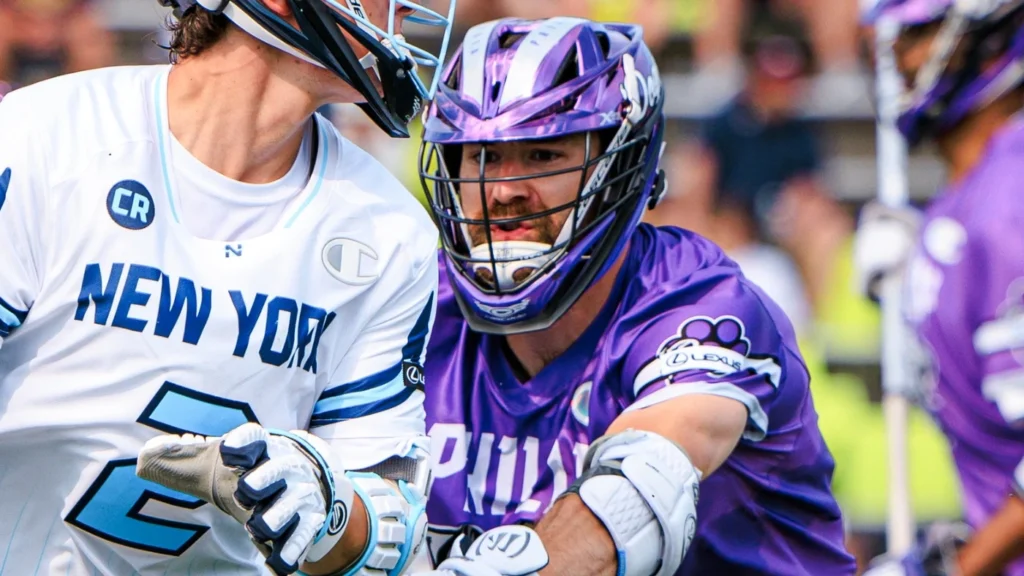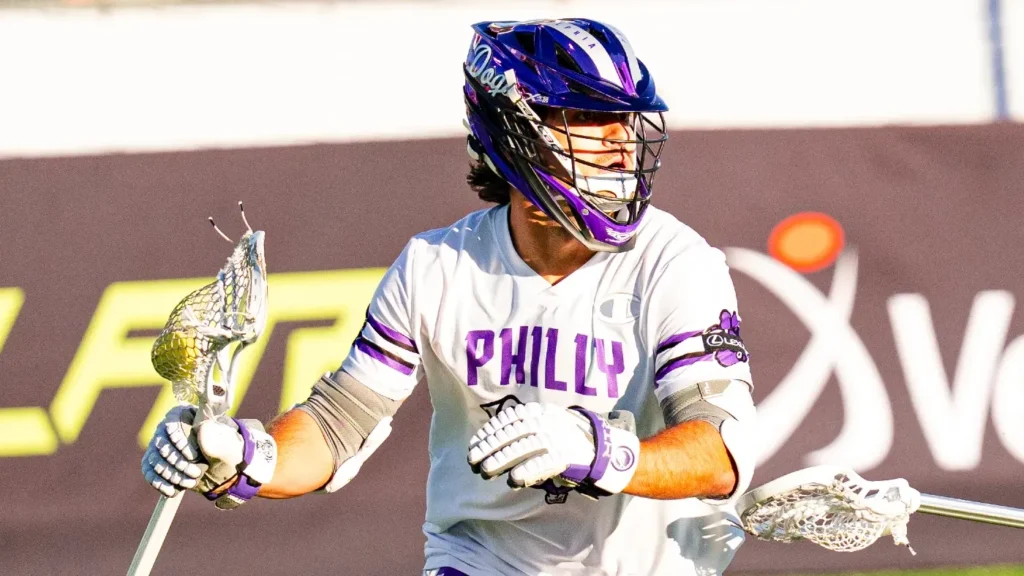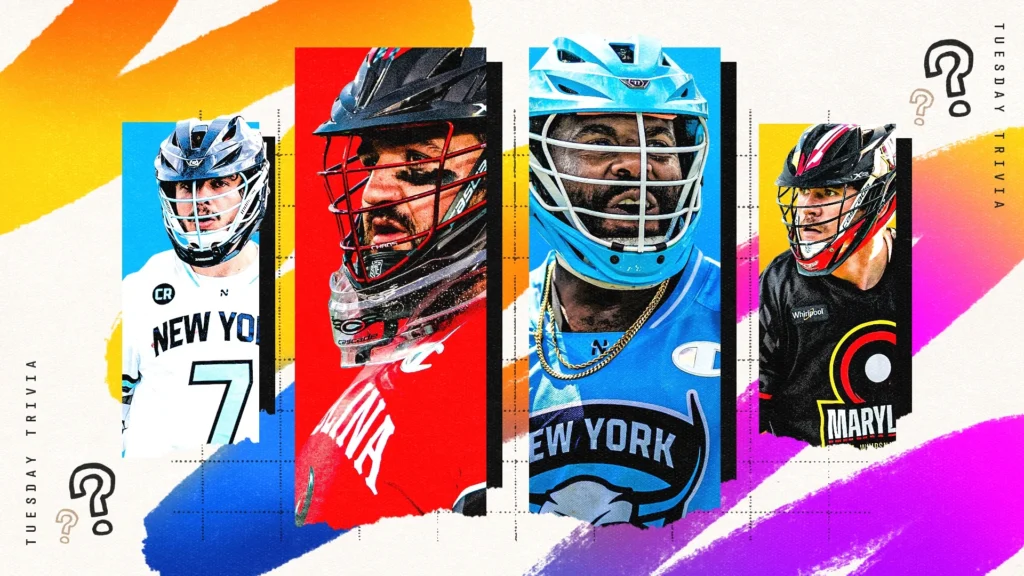“I don’t have the five positions anymore,” Boston Celtics head coach Brad Stevens told the Associated Press two summers ago. “It may be as simple as three positions now, where you’re either a ball-handler, a wing or a big.”
Positionless basketball is the NBA’s latest trend. The 2012 Miami Heat may have been the first team to win with a “small ball” lineup with Chris Bosh at center. A few years later, the Golden State Warriors accidentally discovered their Death Lineup featuring 6-foot-7 Draymond Green at center with four sharpshooters around him. Even within Stevens’ positions, there is a gray area -- players like Ben Simmons, LeBron James and Giannis Antetokounmpo defend like bigs but play the role of the lead ball-handler on offense.
Offenses aim to maximize shooting; defenses aim to maximize switchability. Versatility is more valuable than ever - in both basketball and lacrosse.
At the 2017 IMLCA Convention, Lafayette College head coach Pat Myers proposed a definition for positionless lacrosse: Defining a player by his strengths rather than by his rostered position or location on the field. The line between midfielders and attackmen is becoming increasingly blurry and decreasingly relevant. Myers translated Stevens’ positions to roles on the lacrosse field: ball-handlers are “dodgers,” wings are “shooters,” and bigs are “glue guys.”
Ty Thompson (Chrome LC) and Michael Bocklet (Redwoods LC) are glue guys. Respectively, 93.1 percent and 90.2 percent of their shot attempts were assisted last summer. They both buried at ridiculous rates, too (49.3 percent and 43.2 percent shooting off the catch). Their presence can open up dodging lanes if defenses refuse to slide from them.
Dodgers can play attack or run out of the box. Jordan Wolf (Chrome LC) drills 37.0 percent of his unassisted shots -- mostly initiated out of pick-and-rolls at X. John Ranagan (Chrome LC), John Crawley (Atlas LC) and Christian Cuccinello (Archers LC) are all different types of dodgers. Ranagan is a throwback, downhill midfielder who initiates from the top of the box. Crawley is labeled as a midfielder, but he’s most comfortable inverting short-sticks behind the cage. Cuccinello can initiate from X, from the wing or from up top. Sometimes it’s unclear whether he’s an attackman or a midfielder, but it’s abundantly clear that he’s a dodger.
Roles can change from college to the pros. Jake Froccaro (Chaos LC) and Connor Kelly (Whipsnakes LC) both attempted more shots off the dodge than off the catch, yet they scored more goals of the catch than off the dodge. Their coaches should be focused on figuring out whether to use them as dodgers or as shooters. It’s a much more important question than whether to use them as attackmen or midfielders -- since each spent time at both positions in college, yet it rarely changed their roles in the six-on-six offense.
Similar to how LeBron and Giannis check multiple boxes on the basketball court, there are lacrosse players whose versatility cannot be captured in one label. Take the Archers LC attack, for example. Kevin Rice, Marcus Holman and Will Manny each scored 10+ unassisted goals, 10+ assisted goals and dished out 10+ assists last summer. They shapeshift from dodger to shooter to glue guy from possession to possession. You can never have enough of those players.
Most Premier Lacrosse League lineups will trot out four, five or even six players who were dodgers in college. Some will shout “there’s only one ball!” if an offense hits a cold stretch, but that’s a tired narrative. The goal of positionless lacrosse is to achieve optimal spacing. Lineups with more than one dodger can still do that -- look at the 2017-18 Portland Trail Blazers’ three-guard lineup featuring Damian Lillard, CJ McCollum and Shabazz Napier or the Houston Rockets with James Harden and Chris Paul. Why do those lineups work? Everyone on the floor can contribute as a shooter or glue guy when they’re playing off-ball.
Take the Redwoods LC roster, for example. Since winning the Tewaaraton Award as an attackman, Peter Baum has morphed into an All-Pro midfielder. His position changed, but his role didn’t. Baum is a dodger. Although he has dodged from the midfield more often than X in his professional career, he has shot 39.4 percent on unassisted drives from X; teammates have buried 53.3 percent of looks that Baum has created for them off inverts.
Wherever Baum is on the field, the Redwoods will ask him to initiate. Most of their lineups will feature a glue guy in Bocklet plus up to four shooters in righties Dylan Molloy (41.0 shooting percentage off-the-catch last summer) and Kylor Bellistri (36.4) and in lefties Joe Walters (34.9) and Matt Kavanagh (46.0). Joey Sankey, Kyle Harrison, Molloy and Kavanagh can take dodging pressure off Baum’s shoulders. In which lineups does each player dodge most effectively? Which six offensive players mesh together seamlessly? These are questions the Redwoods’ coaching staff -- and every other staff in PLL -- will spend the early parts of this summer trying to solve.





Pingback: mpo slot online
Pingback: Auto Glass repair Phone leads
Pingback: Positionless Debate: A New Philosophy For Determining Speaker Positions | The 3NR
Pingback: components of strategy
Pingback: kardinal stick
Pingback: cvv2 dumps
Pingback: relx
Pingback: sbo
Pingback: replica christian louboutin black suede boots
Pingback: สล็อตวอเลท
Pingback: Bradford escorts
Pingback: sbo
Pingback: Clixtell Price
Pingback: sbobet
Pingback: Buy magic mushrooms online Ann arbor
Pingback: เพื่อนแท้ เงินด่วนอุดรธานี
Pingback: cheap dumps with pin shop
Pingback: shop good track
Pingback: Devops service providers
Pingback: pour apprendre plus
Pingback: visiter le site Web
Pingback: trouver plus ici
Pingback: browse around this website
Pingback: blotter acid for sale USA
Pingback: ทางเข้า sbobet
Pingback: yoga music
Pingback: pk789 สล็อต
Pingback: lsm99live
Pingback: lsm99.gdn
Pingback: all silicone dolls
Pingback: buy red liquid mercury
Pingback: burn-out
Pingback: โคมไฟ
Pingback: EC
Pingback: ซินแสฮวงจุ้ย
Pingback: Post Cycle Therapy
Pingback: vapes for sale
Pingback: hanongnong